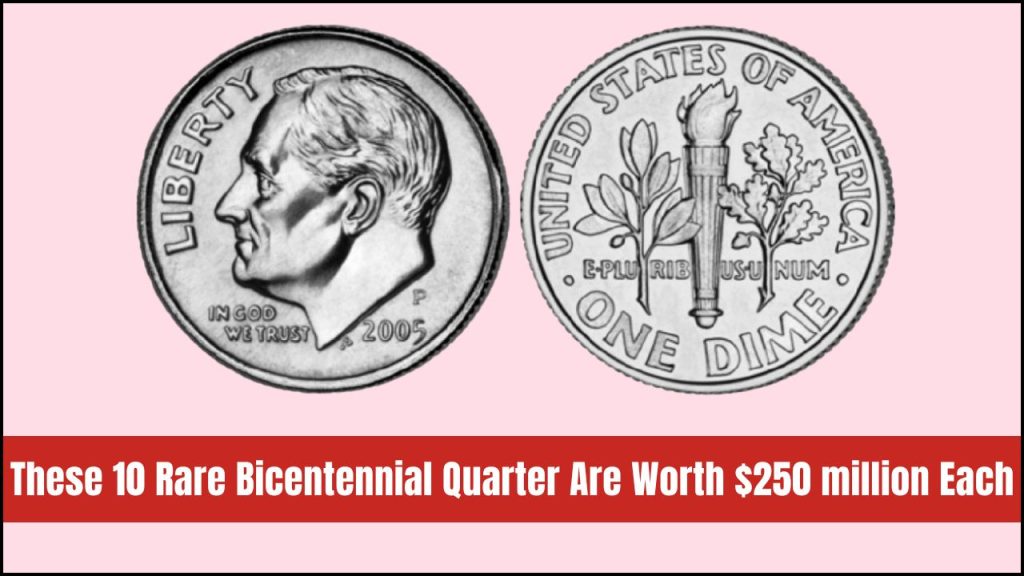
Most people don’t pay much attention to the spare change they receive, but hidden among those common coins might be something extraordinary. Imagine stumbling across a Bicentennial Quarter — a coin you’ve likely seen dozens of times — only to find out it could be worth as much as $250 million. As wild as that sounds, some incredibly rare versions of these commemorative coins are believed to be that valuable. Even more intriguing is the fact that a few may still be floating around in regular circulation.
In this article, we’ll explore why these quarters are so valuable, what makes them unique, and how to spot one in your pocket change.
Overview: Quick Facts About the Bicentennial Quarter
| Feature | Details |
|---|---|
| Coin Name | Bicentennial Quarter |
| Year Marked | 1776-1976 |
| Current Value (Rare Types) | Up to $250 Million |
| Key Characteristics | Minting errors, silver content, special finishes |
| Still Circulating? | Yes, rare ones may still exist |
What Is a Bicentennial Quarter?
The U.S. Mint released the Bicentennial Quarter to commemorate the 200th anniversary of American independence. These quarters replaced the usual eagle-on-branch reverse design with a depiction of a colonial drummer, surrounded by a ring of 13 stars and a torch. George Washington’s profile still appears on the front.
Although these coins were produced in 1975 and 1976, they all carry the dual-date 1776-1976. Billions were minted, making most of them quite common. However, a limited number contain minting errors or were produced with rare materials, and those are the ones collectors dream of.
The Lincoln Wheat Penny Valued at $301 Million, Still in Circulation?
The Lincoln Wheat Penny Valued at $14 Million, Still in Circulation?
The Lincoln Wheat Penny Valued at $9.6 Million, Still in Circulation?
The Lincoln Wheat Penny Valued at $121 Million, Still in Circulation?
Why Are Some Worth Up to $250 Million?
The astronomical value of a few rare Bicentennial Quarters stems from several key factors:
- Minting Mistakes: Errors like double strikes or misaligned dies make coins highly collectible.
- Material Rarity: A few were mistakenly struck on silver or even experimental metal planchets.
- Immaculate Condition: Quarters in uncirculated or proof-grade condition are worth far more.
- Historical Significance: The coin’s tie to America’s bicentennial makes it particularly desirable.
- Scarcity: Some variants may only have one or two examples in existence.
All these factors combined contribute to the staggering market value for these rare coins, some even rumored to be worth a quarter of a billion dollars each.
10 Rare Bicentennial Quarters to Look Out For
If you’re sorting through your spare change, here are ten rare types of Bicentennial Quarters that could turn up:
- Double Die Obverse
- Look for doubling in the date or letters. These mistakes are caused by a misalignment during the die creation process.
- Silver Planchet Error
- Some coins intended for collector sets were accidentally struck using silver. These carry much more weight and value.
- Off-Center Strike
- Coins minted off-center can be highly valuable, especially if the date is still visible.
- Clipped Planchet
- Coins with a curved edge or missing metal from the rim due to a miscut planchet.
- No Mint Mark Proof
- Some collector-grade proof coins were released without a mint mark — extremely rare and desirable.
- Full Drum Lines
- A coin that shows all the lines on the drummer’s drum is a sign of high-quality minting and may fetch a premium.
- Misaligned Die Strike
- If the front and back images don’t line up perfectly, it’s a rare mint error that could be worth thousands.
- Wrong Planchet Error
- Quarters struck on blanks meant for other foreign coins can be immensely valuable.
- High-Grade Mint State
- Coins graded MS-68 or higher by professional services are exceptionally rare and valuable.
- Experimental Metal Composition
- There are whispers of test-strike Bicentennial Quarters made using experimental alloys. If one surfaces, it could break auction records.
How to Identify a Rare Bicentennial Quarter?
Want to try your luck at finding one of these treasures? Here’s what to look for:
- Use a Magnet: Silver coins won’t stick to a magnet, unlike many modern quarters.
- Check the Edge: Silver quarters have a solid gray edge, while standard ones show a copper stripe.
- Weigh It: Silver coins are heavier than copper-nickel ones.
- Look for Errors: Doubling, off-centering, or unusual shapes can signal a mint mistake.
- Inspect with a Loupe: A magnifying glass or jeweler’s loupe helps spot fine details like drum lines or mint mark anomalies.
- Don’t Clean It: Cleaning a coin can reduce its value. Keep it in its original state.
If you suspect you’ve found something rare, contact a professional coin grading service for verification and appraisal.
In Summary
The idea of a quarter being worth hundreds of millions may seem far-fetched, but it’s rooted in real coin collecting history. Rare Bicentennial Quarters continue to capture the imagination of numismatists and everyday people alike. The thrill of possibly discovering one in a coin jar or cash register is what keeps the hunt alive.
So next time you get a quarter in your change, take a closer look. It might just be a small fortune hiding in plain sight.